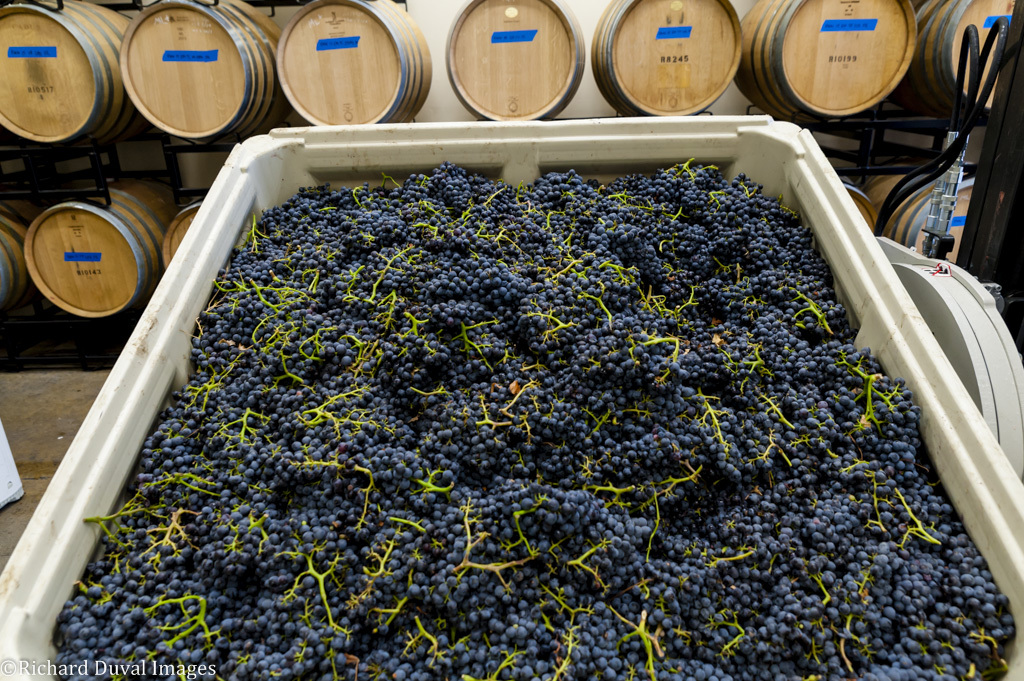The crush season has officially kicked off in Woodinville! It is the busiest, craziest, most exciting time in wine country as grapes are harvested from the vineyard and brought to the winery where the winemaking begins. Though Washington grapes are almost all grown east of the Cascades, dozens of Washington wineries bring their annual harvest over the mountains to Woodinville for crush.
“Crush” is the perfect name for this beehive of activity. It refers to the crushing of harvested grapes (albeit much more gingerly than the term implies) to extract the juice, but it also serves as a fitting reminder of what’s at stake for the winery and the vintage. During crush, everything on the vine is on the line. The weather, work, and decisions that take place during these frenetic weeks between late August and October will determine the quality and desirability of the wine’s vintage.
TIMING IS EVERYTHING
After investing a year’s worth of sweat, money, and expertise in their vineyard, Washington winegrowers enter crush season waiting and agonizing over their single biggest decision: when to pick. Harvest date is rarely the same from year to year, so growers rely on sampling, testing, experience, and gut instinct to decide when to sound the starting gun. An entire year’s work and the quality of the vintage hang in the balance. Pick too early, and tannins may be “green,” or bitter and underdeveloped. Too late and, along with the risk of rain, hail, or frost destroying the crop, the sugar levels may rise too high, resulting in a flabby, unbalanced wine.
During these final weeks, winegrowers closely monitor the development of the grapes, heading into the vineyards regularly – even daily – to calculate the perfect moment for harvest. The individual grape variety, ripeness level, and weather have the greatest influence on selecting the prime time for picking. Weather is such a big factor that winemakers morph into meteorologists, constantly gauging temperature, humidity, and forecasts in order to bring in the grapes at their absolute peak.
FROM VINE TO VINTAGE
When all factors are weighed and the moment is right, crush is on. But it may not be on in all parts of the vineyard. Varying exposure, altitude, and soil can result in different degrees of ripeness, so only select parcels are picked at any given time.
The type of grape is also a big factor. Sparkling wine grapes are picked earliest, with white wine varieties harvested next. Red wine grapes take longer to mature and are picked later. Ice and dessert wine grapes can be picked as late as November or December, allowing for raisin-like fruit with highly concentrated sugars.
Crush turns wine country into a synchronized dance of workers, trucks, and machinery as grapes begin the journey from vine to vintage. Every day is a dawn-to-dusk dash to make the most out of the narrow window of opportunity nature provides to produce great wine. There’s little sleep, truckloads of passion, and an extraordinary amount of generosity and cooperation between wineries. Winemakers are competitive, but first and foremost, they’re a community. The shared adversities of crush season turn them into something closer to a family, with wineries loaning one another trucks, presses, labor – whatever’s needed to help a neighbor bring in their grapes and crush the year’s vintage. When the last of the vines are picked. wineries typically throw a grand harvest party to celebrate the biggest milestone of the wine year.
GETTING UNDER THE SKIN
As grapes complete the 150 to 200-mile trek over the Cascades from vineyards in the dry, eastern portion of the state to the wineries and warehouses of Woodinville, crushing begins immediately so the yeast can get to work fermenting. Human feet were the preferred crushing device for thousands of years, but modern wineries use automated destemmers to prepare grapes for primary fermentation. A destemmer press gently breaks the skins open, exposing the juice and pulp without crushing the skins and seeds, which contain the tannins that contribute structure and texture to the wine. The resulting juice is transferred to a fermentation vessel where cultured yeast is often added to produce a more controlled fermentation. White grapes usually go through primary fermentation without skins, so they don’t contribute color or tannins to the wine. Red grapes ferment with their skins, which impart the deep color and higher tannins characteristic of reds.
Once in the fermentation tank, different wine varieties take different paths on their way to the bottle. The assortment of wines for which Woodinville and Washington are primarily known – Cabernet Sauvignon, Merlot, Syrah, Riesling, Chardonnay, and Sauvignon Blanc – ferment and age in a variety of vessels and barrels at different temperatures for time periods that range from a few months to several years. But they’re all born during a few incredible weeks known as crush. Don’t miss the opportunity to witness, taste, and celebrate this extraordinary genesis of Washington wines.
*photo by Duval Images
